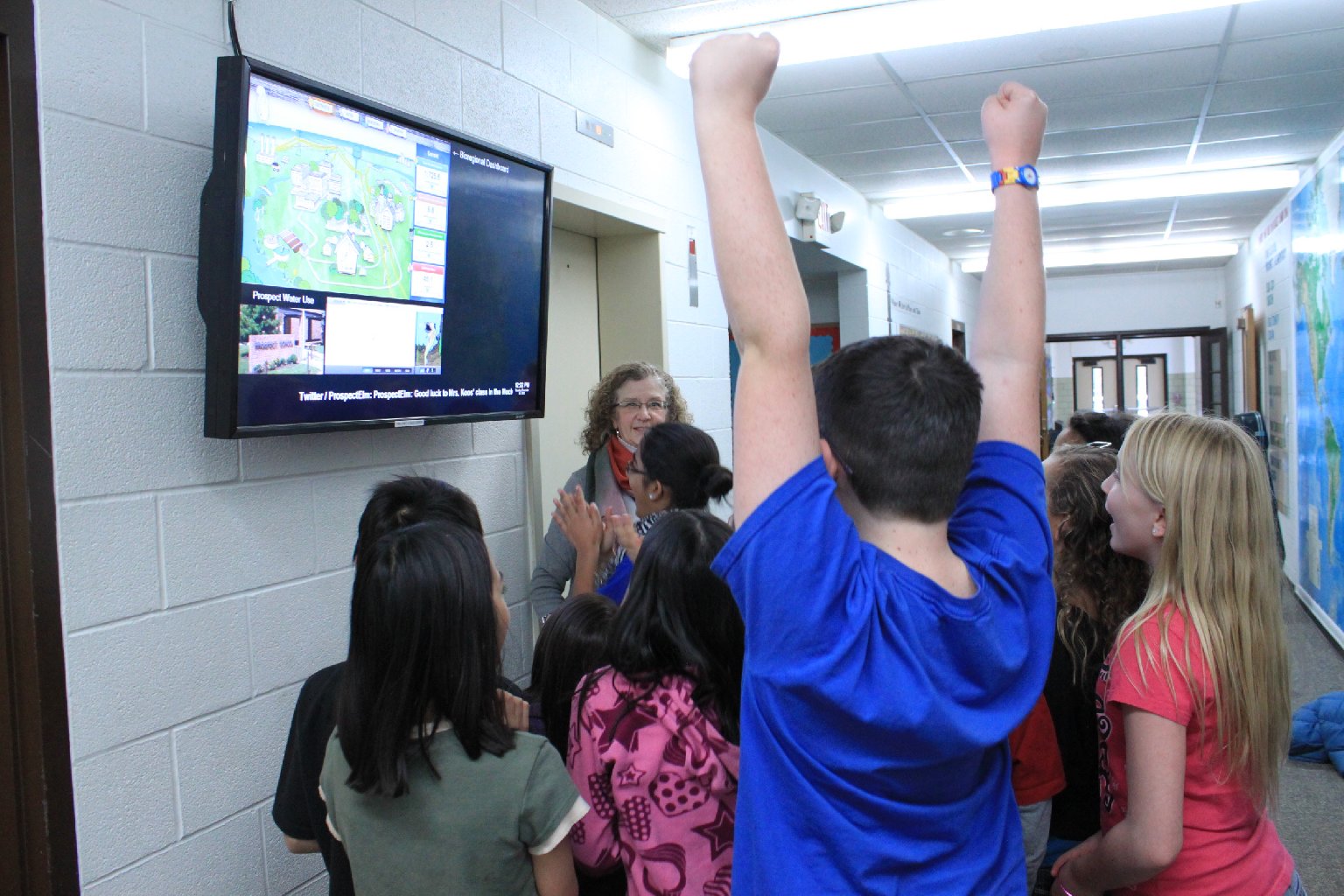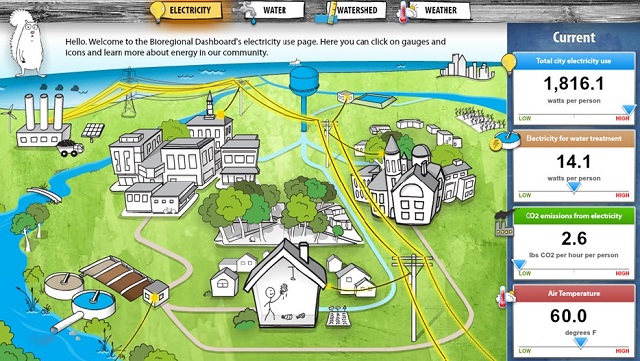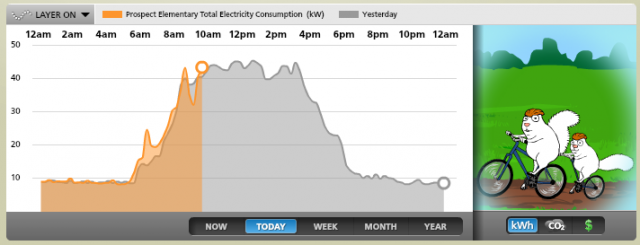It's Thursday afternoon and a group of fifth graders and their teacher are testing and monitoring water quality in a local stream that flows into Lake Erie. They’re eager learners, in part because of a new feature hanging on the wall of the main hallway at Prospect Elementary in Oberlin, Ohio: an “Environmental Dashboard.” The Dashboard is a digital display that shows real-time electricity and water use in their school building. Students can see how their actions affect the building’s overall use of resources.
As today's kids spend more time with technology and less time outside, their understanding of how they interact with, and are a part of, their ecological system may be decreasing. According to the Oberlin researchers who developed the Dashboard, the goal is to help reconnect citizens with the environmental resources on which our lives depend, and increase their sense of being part of a social community and ecological system.

Inspired by the Dashboard, Oberlin seniors Sam Serazo and Shane Clark assisted teacher Joy Harrison in developing activities centered on “systems thinking” and the water-quality monitoring field trip to the local stream, Plum Creek. Systems thinking emphasizes increased causality and connection among different components of social, ecological, and economic systems. In other words, someone who is a systems thinker is more likely to see their actions as impacting the greater system even if that impact is not immediately visible. In their field trip, students had to form hypotheses about how human activities and weather patterns would impact stream quality and then check their guesses using real-time data displayed on the Dashboard.
In addition to partnering with Prospect Elementary, Oberlin’s Environmental Dashboard Project (of which this author is a part), also extends into many other areas of the campus and community. Dashboards monitor resource flow in college dorms and local organizations, and plans are in the works to bring this technology into individual homes using advanced infrastructure smart meters. "I am a mom and I have two teenage boys, and I am dying to be able to show my kids the graph of their water usage when they shower and compare it to my water usage to show them how much water they use," says Cindy Frantz, associate professor of psychology at Oberlin.

The Dashboard project leaders hope to expand the screens and monitoring technology to other local organizations and businesses. This broader implementation will not only enable further research but also have the more widespread effect of increasing sustainable behavior in the small town of Oberlin, which has made a commitment to reducing greenhouse gas emissions below zero in an economically viable manner.

